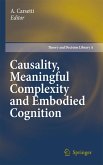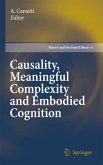This book sheds new light on the interactions between the science of complexity and the science of systems. Though both of these fields have been independently studied extensively, their interrelations have not been satisfactorily analyzed. By a superficial view, both the sciences are based on the same principles of the holistic behavior of the ensembles consisting of components. The author providing an expert analysis on the theory of complexity and bridges the gap to generalize it, by elaborating on all the observable manifestations of complex forms and behaviors and explaining how it is related to general theory of systems.
Particular attention is given to the use of chemical concepts throughout the text to demonstrate the theories as well as the interactions between the two. The central point of this book is the new rational representation of systems that origins from some chemical concepts about the structure of molecules and graph theoretical chemical theory. Thisnovel text appeals to experienced researchers, students, and all those curious about theories of systems, complexities, and theoretical chemistry.
Particular attention is given to the use of chemical concepts throughout the text to demonstrate the theories as well as the interactions between the two. The central point of this book is the new rational representation of systems that origins from some chemical concepts about the structure of molecules and graph theoretical chemical theory. Thisnovel text appeals to experienced researchers, students, and all those curious about theories of systems, complexities, and theoretical chemistry.








